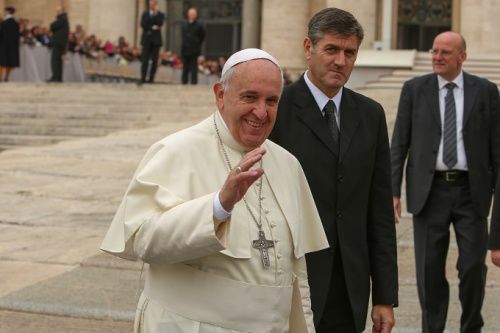Pope Francis will meet with a vast array of different groups during his daytrip to Bosnia, which is a visit Sarajevo’s cardinal says could help ease political and ethnic tensions after the country’s recent war. Francis announced his June 6 trip to Sarajevo during his Sunday Angelus address Feb. 1, asking pilgrims to pray so the visit would be “one of encouragement for the Catholic faithful, fosters seeds of good and contributes to the consolidation of fraternity and peace.” His audiences for the day range from meetings with Bosnia’s presidency and authorities to its bishops, priests, religious and seminarians. He will also meet with different interreligious leaders before holding a final encounter with youth that will wrap-up his events. Sarajevo’s archbishop, Cardinal Vinko Puljic, told CNA April 8 that the Pope’s trip is an opportunity “for the world leaders to make a just peace in Bosnia and Herzegovina.” Historically divided into three key ethnic groups, Bosnia-Herzegovina is composed of a majority of Muslim Bosniaks followed by a large percentage of mostly Orthodox Serbs and a great population of Croats, a majority of which are Catholic. Ethnic tensions broiled during the country’s 1992-1995 war, during which Bosnia’s Serb population began a policy of ethnic “cleansing” in large areas of Bosnia inhabited by non-Serbs and Muslim, Croat and Serb populations who opposed their army. In the cleanup that came after the war’s conclusion with the signing of the Dayton Peace Accords, a certain calm was established, and a 3-member presidency was formed made up of one Bosniak and one Croat elected from the Federation, as well as and one Serb elected from the Republika Srpska. The member with the highest number of votes is elected chairman, unless they were the incumbent chairman at the time of the election. The three presidents jointly serve a four year term, and the chairmanship rotates every 8 months in order to ensure equality. Bosnia’s current presidency consists of Serb offical Mladen Ivanic, who is the current chairman, Croat representative Dragan Covic and Bosniak member Bakir Izetbegovic. Although peace was established with the close of the Bosnian War in 1995, church leaders in the country say that what exists now is still an “unjust peace” that doesn’t guarantee equal human rights to all, such as a safe return home for those who were displaced, many of whom were Catholic. In announcing his plan to visit Sarajevo, which is site where WWI broke out in 1914 with the assassination of Austrian Archduke Franz Ferdinand, Pope Francis “put Sarajevo, again, at the center of interest of the whole world,” Cardinal Puljic said. The news made headlines everywhere, he noted, saying that “because of that, the most influential countries and people of the world started again to think about Bosnia and Herzegovina and reconsider the situation here, trying to rebuild the just peace here.” “In the last few years, Bosnia and Herzegovina was put aside, and now it is again in the center.” Pope Francis’ meeting with the presidency is the first encounter he will have after his official welcoming ceremony at the presidential palace. He will then go on to meet with Bosnia’s authorities before holding encounters with the bishops, priests, religious and seminarians of the country. The Pope is also scheduled to celebrate a Mass in Sarajevo’s Koševo stadium, and will meet with interreligious leaders and youth at the end of the day. After his arrival at 7:30a.m., Francis will give a total of four speeches and one homily to his various audiences before returning to Rome at 9:30p.m.

